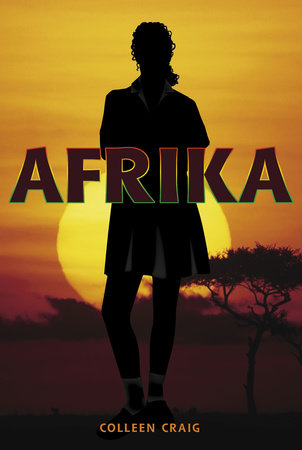TEACHING GUIDE
TEACHING IDEASCurriculum Connections
History
What is apartheid?
The apartheid system kept the people of South Africa — black, white, Indian, and mixed race separate from each other. Apartheid laws meant that the government determined where people lived, worked, went to school, and who they married. These laws extended to every aspect of a person’s life: certain beaches, restaurants, buses, and bathrooms were designated “whites only,” and these laws were strictly enforced.
How might Kim’s life be different if she had been raised in South Africa in the apartheid years with a mixed-race family?
The apartheid laws impacted many of the characters in the book, differently. What were the implications for Lettie, her mother, and her sister? Now discuss how apartheid affected Sandile, Themba’s father. Finally, how did apartheid affect the white characters in the novel, such as Riana and her family?
Truth and Reconciliation Commission
The Truth and Reconciliation Commission was established in South Africa during the mid-90s to investigate the past wrongs of apartheid and to ensure it is not repeated.
Discuss the complex concepts of amnesty and reconciliation. For example, why does Lettie choose to go to the amnesty hearing to listen to the testimony of her husband’s killer? Why do some of the characters choose not to attend the hearings?
Presently, a Truth and Reconciliation Commission is being set up in Canada. In the past,
Canadian aboriginal children were forcefully taken from their homes and transported to residential schools. In doing so, they were separated from not only their families, but from their language and the culture of their parents and ancestors. Many aboriginal children suffered abuse in church-run residential schools, and the Canadian Truth and Reconciliation Commission has been formed to allow people to come forward and tell their stories. Do you think a Truth Commission is a good idea? Why or why not?
Create a public service announcement for and against a Truth and Reconciliation Commission.
Media Literary
Write down and discuss characteristics of the main characters. Give evidence from the text for your observations. How might the story have turned out if Themba had been the main character?
Who do you think is the audience for this book? How might different audiences respond to the story?
Analysing the Text
Create short “Reader’s Theater” pieces from excerpts that illustrate the themes of colonialism and its legacy, racial injustice, discrimination, and oppression.
Rewrite excerpts of the text from a different point of view. For example, take a paragraph from Kim’s point of view and rewrite it so it is from Themba’s point of view. Or, take a short section from Kim’s mother’s point of view and rewrite it so it is from Themba’s mother’s point of view.
What different groups are represented in the story?
Who are the people whose stories are left out?
Geography
On a map of southern Africa, locate the country of South Africa. Look at some of the places where the novel takes place: Cape Town, Robben Island, and Great Karoo.
If you are able to find a map of Cape Town, locate the Botanical Gardens, Table Mountain, Robben Island, and the area to the left of the city that used to be District Six.
District Six is an area close to Cape Town, where Kim’s father grew up. In 1966, District Six was declared a white area under the Group Areas Act, and all the members of the community, including Kim’s father and his family, were forcibly removed to outlying areas. Visit the website www.districtsix.co.za and share what you learn.
DISCUSSION AND WRITINGIn the early ‘90s, apartheid was slowly dismantled and discontinued. Democratic elections in South Africa were held for the first time in April, 1994. This was the first time blacks were allowed to vote. At this point, President Nelson Mandela was elected. For the most part, South Africa’s transition to democracy has been peaceful. What are some of the reasons for this? Why has the South African democratic transition been relatively peaceful, but in so many other countries it is not?
On the day Kim meets Themba, he takes her to the South African Museum in Cape Town and points out the San display. Kim is frightened by how lifelike the figures look. The figures looked real because they were taken in 1910 from casts of real San people, with the aim of studying racial types. Themba angrily points out to Kim that the San people are exhibited alongside stuffed animals. Who are the San? This popular exhibit was displayed in the South African museum until recently. Why would this display be considered controversial?
SUGGESTED ACTIVITIESTraveling to a foreign country and attending a foreign school is a challenging prospect. Ask students what they would do to prepare for such a journey. What would they need to learn or investigate before they go? What would they take with them?
Canada is defined as a multiracial country. Ask students to explain what this word means to them personally. Have they lived in a country other than Canada? Do racial attitudes differ here from those other countries?
Imagine if Themba were to come to Canada to visit Kim. What might be an African boy’s first impressions of Canada? How would he adjust to climate, social attitudes, and being far away from his family?
Visit the Robben Island website and see photos of the famous prison, which is now a museum. Who was Nelson Mandela? Why was he arrested? How many years did he spend in prison? Find out what the cells looked like, and what kinds of rations were given to the prisoners. Sometimes this prison is referred to by previous inmates as a “university.” Why is this?
ADDITIONAL RESOURCEShttp://www.tablemountain.nethttp://www.districtsix.co.zahttp://www.robben-island.org.zahttp://www.robbenisland.co.zahttp://www.southafrica.info/about/history/history.htmhttp://www.knowledge4africa.co.za/worldhistory/south-africa00.htm

